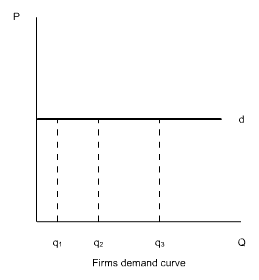- CFA Exams
- 2025 Level I
- Topic 2. Economics
- Learning Module 1. The Firm and Market Structures
- Subject 6. Perfect Competition
Why should I choose AnalystNotes?
AnalystNotes specializes in helping candidates pass. Period.
Subject 6. Perfect Competition PDF Download
A financial analyst must understand the characteristics of market structures to better forecast a firm's future profit stream.
We focus on those characteristics that affect the nature of competition and pricing. They are:
- The number of firms (including the scale and extent of foreign competition).
- The extent of product differentiation (which affects cross-price elasticity of demand).
- The pricing power of seller(s). Can a firm influence the market price?
- Barriers to entry. Exit costs should also be considered.
- Non-price competition such as product differentiation.
Although it is not discussed in the required reading, the perfect competition is in every microeconomic textbook, and we will discuss it here.
An industry with perfect competition displays the following characteristics:
- All the firms in the market are producing an identical product (e.g., wheat of the same grade).
- No barriers limit the entry or exit of firms in the market.
- A large number of firms exist in the market. Established firms have no advantages over new ones.
- Sellers don't have market-pricing power.
- There is no non-price competition.
Perfect competition arises:
- When a firm's minimum efficient scale is small relative to market demand so there is room for many firms in the industry, and
- When each firm is perceived to produce a good or service that has no unique characteristics, so consumers don't care which firm they buy from.
In perfect competition, each firm is a price taker. Price takers are sellers who must take the market price in order to sell their products.
- There is no price decision to make: they will merely attempt to choose the output level that will maximize profit.
- Each price taker's output is small relative to the total market: the output of a firm exerts little or no effect on the market price.
This diagram represents the market demand and supply curve for a certain product - for example, eggs.

As usual, the intersection of the demand and supply curve creates the market price (P) per egg. Now remember that a firm that is a price taker can sell all it wants to at that price, but can sell nothing at a higher price.

Price takers can sell all their output at the market price, but they are unable to sell any of their output at a price higher than the market price. That is, a price taker faces a horizontal demand curve. Each firm's output is a perfect substitute for the output of the other firms, so the demand for each firm's output is perfectly elastic.
- They can sell as much as they would like at the going market price.
- There is no need for them to reduce their price in order to sell more.
- Moreover, at any price above the market price there is no demand; their sales would be zero (nobody would buy from that firm because there are so many other firms from which to obtain the product at the market price).
- This reflects the fact that perfectly competitive firms have no control over their price.
When a perfectly competitive market is in long-run equilibrium:
- Quantity supplied and quantity demanded must be equal in the market.
- Firms in the market must earn zero economic profit at the prevailing market price (that is, firms are earning the "normal rate of return"). This occurs when market price = marginal revenue = marginal cost = minimum ATC. Note that accounting profits may still be positive.

Why do firms earn zero economic profit in the long-run equilibrium?
- If firms earn positive economic profit in the long-run equilibrium, these firms will have an incentive to expand their capacity, and new firms will enter the market. This will lead to an increase in supply, forcing the market price down until economic profit is eliminated.
- Conversely, if firms in the market incur economic losses, some firms will leave the market. Accordingly, supply will decline, causing the market price to rise until existing firms can earn the normal rate of return (that is, economic profit is zero).
User Contributed Comments 5
| User | Comment |
|---|---|
| cp24 | So at MR = MC the only profit will be normal profit? |
| Mine | In response to cp24s comment, yes the profit would be only normal profit at this point since there is no economic profit |
| uberstyle | No economic profit due to perfect competition. Existence of economic profit would lead to new entrants. |
| abhishekanand | In response to cp24, whether there is an economic profit will depend on whether at MR=MC, P(=MR)>ATC(Average total cost) or not. If P>ATC: economic profit(hence more than normal profit) If P=ATC: 0 economic profit, just normal profit If P<ATC: economic loss, not even normal profit. |
| Freddie33 | The most difficult section in CFA |

You have a wonderful website and definitely should take some credit for your members' outstanding grades.

Colin Sampaleanu
My Own Flashcard
No flashcard found. Add a private flashcard for the subject.
Add